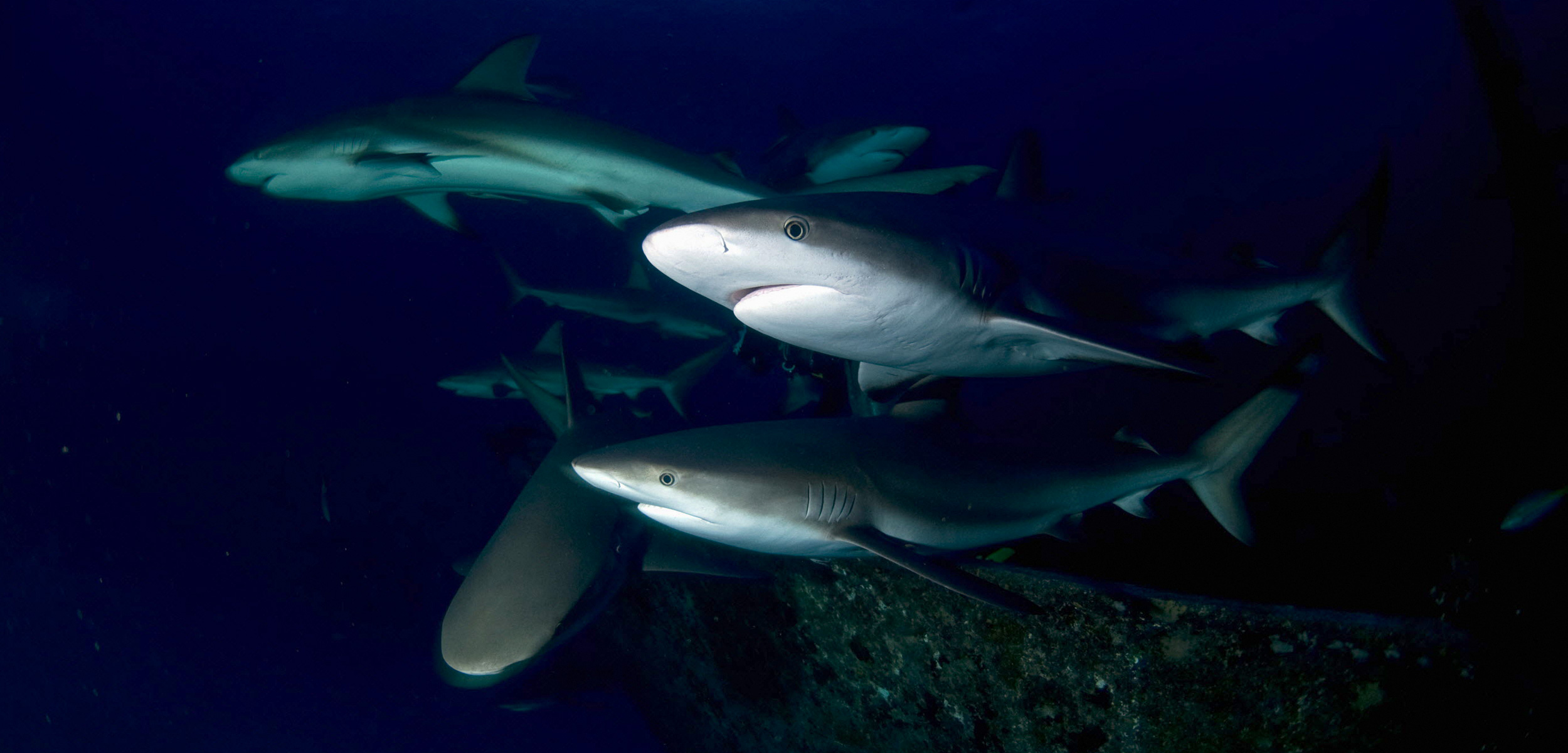Where Do Sharks Go in Hurricanes?
Fearing yet another sequel to Sharknado, sharks get out of the way when a hurricane approaches.
Article body copy
Sharks have been around for 500 million years, so it’s no surprise they’ve learned a few things about survival.
Now scientists are learning that sharks avoid mighty hurricanes by quickly diving for deeper waters.
“When these big storms come through, you have a lot of wind, a lot of waves—a real chaotic environment,” says Grace Casselberry, a doctoral candidate in marine science at the University of Massachusetts Amherst. “We think they’re moving out to these deeper areas to take shelter from the storm.”
Casselberry says luck was on her side when she made this discovery. She and her colleagues were tracking tiger, lemon, nurse, and Caribbean reef sharks in the Buck Island Reef National Monument, a seagrass- and sand-filled lagoon protected by a coral reef off northeast Saint Croix in the US Virgin Islands, as part of a larger study on shark behavior in the area. They’d attached transponders to the sharks that sent signals to receivers about the size of Pringles cans that were anchored to the seafloor.
Normally, before a big storm blows in, the scientists would retrieve their receivers to avoid losing them. But when Hurricane Maria struck in September 2017, they didn’t have time.
Fortunately, most of the receivers survived the hurricane and recorded how the sharks behaved. About two hours before the strongest part of the hurricane hit, when it was about 100 kilometers away, nine of the sharks, including individuals from each of the four species, moved out of tracking range toward deeper water.
Casselberry says the sharks would have never experienced a storm like Hurricane Maria before because they were mostly quite young and the storm set a record for low barometric pressure.
Shaili Johri, a postdoctoral researcher at San Diego State University who was not involved in the research, says the sharks were likely sensing a change in barometric pressure caused by the storm and took that as their cue to dive deep.
Shallow water can be dangerous for sharks during storms in the same way that it is for ships. It’s easy to get knocked around or thrown against a reef or other feature on the seabed, and there’s not a lot of room to maneuver and avoid obstacles.
Johri says the data collected in Saint Croix matches earlier research that shows blacktip sharks in Florida responded to falling barometric pressure caused by 2001’s Hurricane Gabrielle.
The observations could prove important for conservation efforts. “These findings help us understand how shark populations may change in size and distribution from natural disturbances, and these measures are useful in stock management and conservation of populations,” Johri says.
These results also show why sharks are so successful.
“They have the ability to overcome really difficult times,” Johri says. “If we let them be, they can live for a really long time.”

